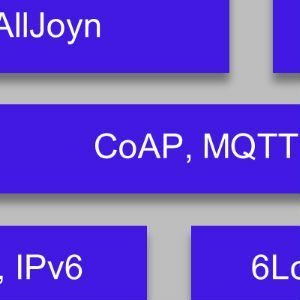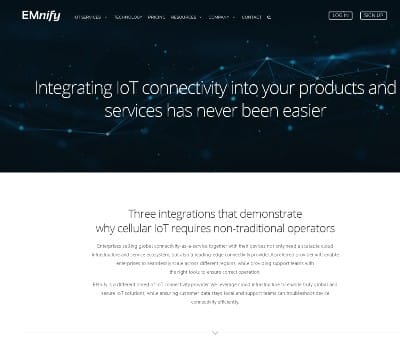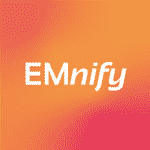
IoT Software Guide
Find and compare the best IoT Software development tools, OS, language platforms, and frameworks.
The following Channel Guide will help you:
- Learn what what features and categories makeup the current Internet of Things Software market.
- Filter based on layer (Embedded OS, Middleware, Data Cloud Platforms).
- Get an overview of IoT Protocols and and programming languages.
- Protocols
- Platforms
- Embedded Operating Systems
- Open Source
- Partner Systems
- Middleware
- JavaScript / Node.js
- Natural Language
- Visual Programming Tools
- Additional Resources
12/01/2020
Featured Firm
EMnify
EMnify is a leading cloud-native IoT connectivity provider that empowers businesses worldwide to get the best out of their devices and overcome industry barriers. EMnify’s connectivity is available in 180 countries with 540 operators globally.
Partner Advertisement
Protocols:
A list of Internet of Things focused protocols including: 6LoWPAN, MQTT, CoAP and others can be found here.
Platforms/ Data Brokers:
A list of Internet of Things platforms like Thingworx, ioBridge, Sense and others can be found here.
Embedded Operating Systems:
| System | Overview | Programming Model | Language |
| Tiny OS | TinyOS is an open source, BSD-licensed operating system designed for low-power wireless devices, such as those used in sensor networks, ubiquitious computing, personal area networks, smart buildings, and smart meters. A worldwide community from academia and industry use, develop, and support the operating system as well as its associated tools, averaging 35,000 downloads a year.
- TinyDB |
Event Driven, support for TOS threads | NesC |
| Contiki | Contiki is an open source, highly portable, multi-tasking operating system for memory-efficient networked embedded systems and wireless sensor networks. Contiki has been used is a variety of projects, such as road tunnel fire monitoring, intrusion detection, wildlife monitoring, and in surveillance networks.Contiki is designed for microcontrollers with small amounts of memory. A typical Contiki configuration is 2 kilobytes of RAM and 40 kilobytes of ROM. | Protothreads and events | C |
| Mantis | The MANTIS Group at CU Boulder has developed an open source, multi-threaded operating system written in C for wireless sensor networking platforms. Some key features of MANTIS OS (MOS): Developer friendly C API with Linux and Windows development environments Automatic preemptive time slicing for fast prototyping Diverse platform support including MICA2, MICAz, and TELOS motes Energy-efficient scheduler for duty-cycle sleeping of sensor node Small footprint (less than 500B RAM, 14KB flash) |
Threads | C |
| Nano-RK | Nano-RK is a fully preemptive reservation-based real-time operating system (RTOS) from Carnegie Mellon University with multi-hop networking support for use in wireless sensor networks. Nano-RK currently runs on the FireFly Sensor Networking Platform as well as the MicaZ motes. It includes a light-weight embedded resource kernel (RK) with rich functionality and timing support using less than 2KB of RAM and 18KB of ROM. Nano-RK supports fixed-priority preemptive multitasking for ensuring that task deadlines are met, along with support for CPU, network, as well as, sensor and actuator reservations. Tasks can specify their resource demands and the operating system provides timely, guaranteed and controlled access to CPU cycles and network packets. Together these resources form virtual energy reservations that allows the OS to enforce system and task level energy budgets. | Threads | C |
| LiteOS | LiteOS is an open source, interactive, UNIX-like operating system designed for wireless sensor networks. With the tools that come with LiteOS, you can operate one or more wireless sensor networks in a Unix-like manner, transferring data, installing programs, retrieving results, or configuring sensors. You can also develop programs for nodes, and wirelessly distribute such programs to sensor nodes. | Threads and Events | LiteC++ |
| FreeRTOS | FreeRTOS is a real-time operating system for embedded devices, being ported to several microcontrollers. It is distributed under the GPL with an optional exception. | C |
nesC: A Programming Language for Deeply Networked Systems
Other efforts:
SOS
EmberNet
Smart-its
Ant Nut/OS
Squawk Virtual Machine
Synapse's SNAP network operating system
"An Internet-enabled, instant-on, multi-hop, mesh network designed to cost-effectively run efficiently over a wide range of popular microprocessors and microcontrollers"
ClearConnex
" ClearComm is a mature, proven, hardware agnostic software platform that can be loaded on any off-the-shelf modem or added to custom designed hardware."
Abacus OS
"With Abacus OS developers can create mobile applications between cloud services and local devices."
Open Source
 |
RIOT
Description: |
 |
Thingsquare Mist
Description: |
 |
Saphire OS
Description: |
 |
Nimbits
Description: When your systems send new numeric, json, or xml data into a Nimbits Data Point using the REST web services, new values can trigger cascading calculations, alerts, statistics and more. Use Nimbits Server as a backend to your applications, generating charts and data visualisations with javascript using the public cloud, or download and build your own infrastructure. |
 |
Thingspeak
Description: |
 |
AllJoyn Description: An open source project which provides a universal software framework and core set of system services that enable interoperability among connected products and software applications across manufacturers to create dynamic proximal networks so that products – for the home, automotive and the enterprise – can interact in new, exciting and useful ways that will engage and delight users. |
 |
OpenAlerts
Description: |
 |
IoT Toolkit
Description: |
 |
The Thing System
Description: Your life and your house went from one computer to an Internet of things. From tablets to lightbulbs, from sensors to media boxes, everybody gets their own Internet. Today, you have to fight your things. They don't talk to each other, the apps don't work, it's a tower of babel. Our solution — the Thing System — is open source. We'll talk to anything, you can hack the system, it has an open API. With the Thing System, you can finally take control of your things. |
| Nitrogen
Description: |
|
| Argot
Description: |
|
| dat
dat is a new initiative that seeks to increase the traction of the open data movement by providing better tools for collaboration:
|
Partner Ecosystems:
 |
Berg Cloud
Description: BERG Cloud is best suited for products which communicate directly with the web. For personal smartphone peripherals we recommend Bluetooth 4, and for streaming media we recommend wifi. All BERG Cloud products are associated with one or more user accounts, and take advantage of the same sharing, control and configuration user experience that we created for Little Printer. |
 |
iOTOS
Description: |
 |
Electric Imp Description: The imp is a powerful, yet tiny, hardware module that runs the imp OS. Our operating system provides the foundation to build advanced features and services for your devices, and it works with the imp Cloud to provide seamless and secure connectivity of your devices to software, third party services and external servers. |
 |
Carriots
Description: You can easily integrate your application with external IT systems throughour powerful APIs, web services, and a completely hands-free hostingenvironment that automatically scales to meet any demand, whether you’reserving several devices or several million. |
| Realtime.io
Infrastructure for the real-time Internet of Things |
|
| Kynetx
With Kynetx, you can easily write apps that look for events and user context, pull in a variety of data sources, then fire actions based on conditions across an URL. And because your app is cloud-based, when you update your code, every user sees the change instantly. |
Industry Specific:
Smart Homes:
Middleware
ProSyst:
Internet of Things Connector. We do the middleware to make connected things and devices smart and enable value driven innovation.
MundoCore:
The communication middleware MundoCore was specifically designed for the requirements in mobile and ubiquitous systems. MundoCore is based on a microkernel design, supports dynamic reconfiguration, and provides a common set of APIs for different programming languages (Java, C++, Python) on a wide range of different devices. The architectural model addresses the need for proper language bindings, different communication abstractions (Publish/Subscribe, Distributed Object Computing, and streaming), peer-to-peer overlays, different transport protocols, different invocation protocols, and automatic peer discovery.
Gaia:
Gaia brings the functionality of an operating system to physical spaces. Common operating system functions are supported, such as events, signals, file system, security, processes, process groups, etc. Gaia extends typical operating system concepts to include context, location awareness, mobile computing devices and actuators like door locks and light switches.
Ubiware:
(UBIWARE) which will allow creation of self-managed complex industrial systems consisting of distributed, heterogeneous, shared and reusable components of different nature, e.g. smart machines and devices, sensors, actuators, RFIDs, web-services, software components and applications, humans, etc.
SensorWare:
The framework that allows easy, efficient dynamic programmability for sensor networks.
ROS (Robot Operating System):
Provides libraries and tools to help software developers create robot applications. It provides hardware abstraction, device drivers, libraries, visualizers, message-passing, package management, and more. ROS is licensed under an open source, BSD license.
SensorBus:
The Sensor Bus establishes an intermediary layer between geosensor networks and the Sensor Web to close the conceptual gap between these two distinct layers resulting from different protocol stacks and data models. Thereby, the Sensor Bus facilitates the integration of new sensors as well as new sensor web services.
Resouces:
- Presentation: Unified Middleware for Internet of Things By Honbo Zhou
- Research: Smart Semantic Middleware For The Internet Of Things (PDF)
EEML: Extended Environments Markup Language
A protocol for sharing sensor data between remote responsive environments, both physical and virtual. It can be used to facilitate direct connections between any two environments
SensorML
The OpenGIS® Sensor Model Language Encoding Standard (SensorML) specifies models and XML encoding that provide a framework within which the geometric, dynamic, and observational characteristics of sensors and sensor systems can be defined.
Websockets:
A technology providing for bi-directional, full-duplex communications channels, over a single Transmission Control Protocol (TCP) socket. It is designed to be implemented in web browsers and web servers, but it can be used by any client or server application. The WebSocket API is being standardized by the W3C, and the WebSocket protocol is being standardized by the IETF.
Because ordinary TCP connections to ports other than 80 are frequently blocked by administrators outside of home environments, it can be used as a way to overcome these restrictions and provide similar functionality with some additional protocol overhead while multiplexing several WebSocket services over a single TCP port.
IBM MessageSight:
IBM MessageSight extends messaging networks with extreme transaction rates, massive scale, and predictable low latency. It delivers messaging for the edge of the enterprise to reach out to the expanding Internet of Things, the dramatic scaling in the number of concurrent devices that can be connected with timely information.
MQTT:
MQ Telemetry Transport - The MQTT protocol enables a publish/subscribe messaging model in an extremely lightweight way. It is useful for connections with remote locations where a small code footprint is required and/or network bandwidth is at a premium.
Koneki:
The Koneki project delivers tools for Machine-to-Machine solutions developers to help them develop, simulate, test and deploy their M2M applications.
MIHINI:
The Mihini project delivers an embedded runtime running on top of Linux, that exposes an high-level Lua API for building Machine-to-Machine applications.
oBIX (Open Building Information Xchange):
A focused effort by industry leaders and associations working toward creating a standard XML and Web Services guideline to facilitate the exchange of information between intelligent buildings, enable enterprise application integration and bring forth true systems integration.
Constrained Application Protocol (CoAP)
A specialized RESTful (Representational State Transfer) protocol for use with constrained networks and nodes for machine-to-machine applications such as smart energy and building automation.
A more complete list of Internet of Things focused protocols including: 6LoWPAN, MQTT, CoAP and others can be found here.
Visual Programming Tools
Open Source
- Node-RED
“A visual tool for wiring the Internet of Things" - NETLab Toolkit
"Drag and drop the Internet of Things”
Commercial / Enterprise Focused
- DGLux5
"An enterprise-scale solution for developing Internet of Things applications" - ReactiveBlocks
“A professional tool to build robust IoT applications" - AT&T Flow Designer
“Unlock the power of your IoT data by prototyping, building and hosting applications with Flow Designer"
Additional:
WoTKit
"The Web of Things Toolkit is a platform as a service that allows you to connect things to the web. The system serves as a sensor data aggregator, dashboard, remote control and data processing tool. Developers can also create their own applications by using the RESTful API supplied with the platform."
JavaScript / Node.js:
NodeJs
"Node.js is a platform built on Chrome's JavaScript runtime for easily building fast, scalable network applications. Node.js uses an event-driven, non-blocking I/O model that makes it lightweight and efficient, perfect for data-intensive real-time applications that run across distributed devices."
DeviceJS
"A JavaScript based development platform for reacting to sensors and controlling devices. It’s built on top of Google’s V8 JavaScript engine, Node.js and a real-time JSON database."
See more projects here.
Natural Language
Wit.AI
"Wit.AI enables developers to add a natural language interface to their app or device in minutes. It’s faster and more accurate than Siri, and requires no upfront investment, expertise, or training dataset.'
HyperCat
"Is a lightweight JSON-based hypermedia catalogue format for exposing collections of URIs. Each HyperCat catalogue may expose any number of URIs, each with any number of RDF-like triple statements about it. HyperCat is simple to work with and allows developers to publish linked-data descriptions of resources.
HyperCat is designed for exposing information about IoT assets over the web. It allows a server to provide a set of resources to a client, each with a set of semantic annotations. Implementers are free to choose or invent any set of annotations to suit their needs."
QEST
"Is a stargate between the universe of devices which speak MQTT, and the universe of apps which speak HTTP and REST."




